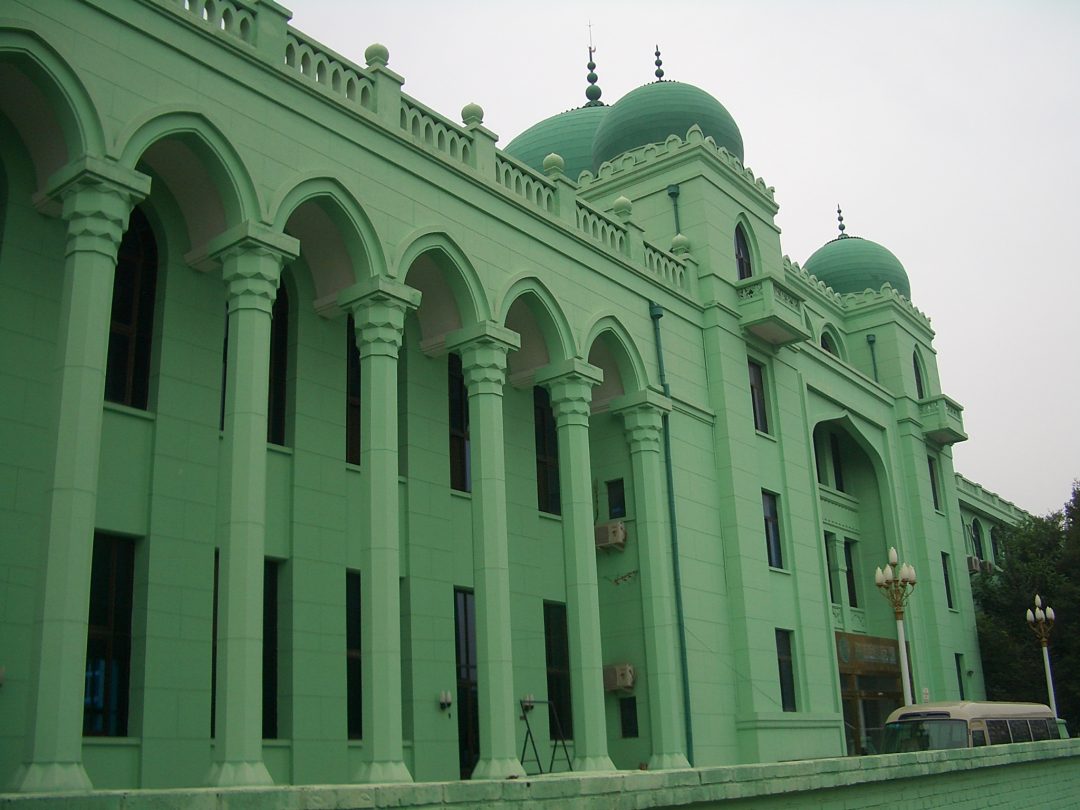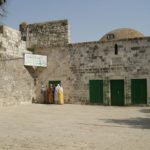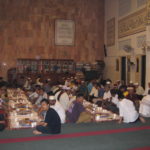Beauty of Urumchi
Considering the great importance of history and tradition in Islam, it’s no surprise that inspecting the history and culture of its greatest cities awards a deep and interesting prize. One is likely to find great cultural, religious and social achievements, traditions and rituals. Cities such as Damascus (Syria), Baghdad (Iraq) and Constantinople/Istanbul (Turkey), famous for their architecture, landmarks, and customs, are obvious choices when considering prosperous Muslim cities to study. However, those selections alone are limiting, not allowing one to expand his or her knowledge of the world itself let alone the vast religion of Islam. There are millions of other cities around the globe, a large percentage of which are also considered Muslim; one lesser-known example is Urumchi, China. It’s location and history make it an interesting choice for anyone curious about Muslim cities.
 Located in northwestern China, Urumchi is the capital city of the Xingjiang autonomous region. This particular region is also known as East Turkistan and resides in the center of Asia, bordering Kazakhstan, Kyrgyzstan, Tajikistan and Afghanistan to the west, Russia and Mongolia to the east, Tibet on the south, and Pakistan and India to the southwest. The city of Urumchi itself is considered the furthest major city from the ocean, sitting landlocked about 2250 kilometers from the nearest major sea. Because of this remoteness, the climate is rather arid and in the summer quite hot, with the typical harsh winters of the region. The city sits in a grassy location (“Urumchi” meaning beautiful pasture) between many prominent geographical features, such as the ice-capped mountains of the Tien Shan chain, a large salt lake, rolling pine tree forests, and sandy basin dunes. It is an important locale for caravans heading to Turkistan, as well as being one of the last stops on the famed Silk Road. The city is located on prime coal mining and petroleum-producing land, with its major exports including iron and steel.
Located in northwestern China, Urumchi is the capital city of the Xingjiang autonomous region. This particular region is also known as East Turkistan and resides in the center of Asia, bordering Kazakhstan, Kyrgyzstan, Tajikistan and Afghanistan to the west, Russia and Mongolia to the east, Tibet on the south, and Pakistan and India to the southwest. The city of Urumchi itself is considered the furthest major city from the ocean, sitting landlocked about 2250 kilometers from the nearest major sea. Because of this remoteness, the climate is rather arid and in the summer quite hot, with the typical harsh winters of the region. The city sits in a grassy location (“Urumchi” meaning beautiful pasture) between many prominent geographical features, such as the ice-capped mountains of the Tien Shan chain, a large salt lake, rolling pine tree forests, and sandy basin dunes. It is an important locale for caravans heading to Turkistan, as well as being one of the last stops on the famed Silk Road. The city is located on prime coal mining and petroleum-producing land, with its major exports including iron and steel.
The city of Urumchi was not under Chinese rule until the 7th and 8th centuries, however, it had been under the influence of China as early as 122 B.C. with the rule of emperor Wu Ti. Wu Ti of the Han dynasty was responsible for conquering East Xinjiang the province in which Urumchi now lies. It played an important role as a stop on the famed trade route the “Silk Road”, as one of the last cities and was even an important military fort of the Han dynasty. Urumchi was once named “Dihua” which means, “to enlighten”, however in 1954 it was renamed what it is today, which in ancient Mongolian means “beautiful pasture”.
Islam in Tang dynasty
It was not until the reign of the Tang dynasty (618-907 c.e.) that the people of East Turkistan, especially Urumqi and also Kashgar, embraced Islam. Tang dynasty records even include a visit from Saab ibn Abi Waqqas, a noted companion of the prophet Mohammed, considered the birth of Islam in China around 650 c.e. (Encyclopedia Britannica). They replaced their temples with mosques, some of the larger ones able to accommodate over 5,000 people. A majority of the Uyghur region accepted Islam at around the same time, some a little later than others. Arabs moving along the Silk Road introduced the religion of Islam to China. Since a majority of Muslims in Saudi Arabia are Sunni, one can assume that the particular traders who encountered China, more specifically Xinjiang and Urumqi, were in fact Sunni.
 Since the introduction of Islam to China and more specifically Urumqi, there have been numerous cultural achievements in the city. Recording a GDP of around $2850 (US) in 2004, Urumchi is the largest seller of consumer goods in the Xinjiang region. In religion, the Institute for the Study of Islamic Texts, located within the city limits of Urumchi, is the only madrassa in Xinjiang with official sanctioning. In 1962 railway transportation was brought to the city of Urumqi by way of the Lanzhou-Xinjiang railroad. Rule of the region changed as often as dynasties ended and new ones began, from the Song to the Qing and so on.
Since the introduction of Islam to China and more specifically Urumqi, there have been numerous cultural achievements in the city. Recording a GDP of around $2850 (US) in 2004, Urumchi is the largest seller of consumer goods in the Xinjiang region. In religion, the Institute for the Study of Islamic Texts, located within the city limits of Urumchi, is the only madrassa in Xinjiang with official sanctioning. In 1962 railway transportation was brought to the city of Urumqi by way of the Lanzhou-Xinjiang railroad. Rule of the region changed as often as dynasties ended and new ones began, from the Song to the Qing and so on.
Urumchi is a figurative “melting pot” of peoples, sporting many different ethnicities and racial backgrounds as part of their population of about 2.1 million. The top three demographics in Urumchi include Han, (around 75%) Uyghur (13%) and Kazhak (2 %), while the rest consists of Hui, Kirghiz, Mongol, and others. The people of Urumchi followed many religions before Islam was introduced, these included Buddhism, Shamanism, Manicheism and even Christianity, which is still practiced in East Turkistan today. The languages used in the city and its neighboring regions are mainly Uyghur (written in Uyghur Latin script) and Traditional Chinese.
The Establishment of the Islamic Association of China
On May 11th, 1953 the country of China established the “Islamic Association of China” the help in the advancement of Chinese Muslims. Along with this obvious religious achievement, many cultural achievements have come from China and more specifically the city of Urumchi. A book has even been written entitled “Mummies of Urumchi” concerning the burial procedures and practices of the people and their city.
 Towering skyscrapers and modern looking architecture make up the land-locked city’s skyline, and numerous domes can be seen as well representing the city’s Muslim population The most obvious landmark is the city itself, being part of one of the most important historical innovations, the Silk Road. One landmark within the city, however, is Red Hill, named for its sanguine rocks, consisting of lush greenery, pagodas, and a shrine. Another example of beauty can be found in the city’s calligraphy, known for its intricacy and visual pleasantry.
Towering skyscrapers and modern looking architecture make up the land-locked city’s skyline, and numerous domes can be seen as well representing the city’s Muslim population The most obvious landmark is the city itself, being part of one of the most important historical innovations, the Silk Road. One landmark within the city, however, is Red Hill, named for its sanguine rocks, consisting of lush greenery, pagodas, and a shrine. Another example of beauty can be found in the city’s calligraphy, known for its intricacy and visual pleasantry.
The Xinjiang Regional Museum would be the first place that I would like to visit, as it contains many artifacts from the Silk Road, including pottery, fabrics, weapons, and even objects used in mummification, as well as actual mummified bodies. It shows the variety of religion and ethnic diversity that the city is known for. An excellent geographical choice would be the “Heavenly Lake” or Tianchi Lake, located between the snow-capped mountains that border the city to the south. One can take a boat ride across the lake and enjoy a peaceful serene day on the water. Another tourist attraction known to the city is its Southern Pasture, littered with spruce trees and waterfalls. Great for a horseback ride or a hike down the many trails through the narrow West White Poplar Gully. Lastly, I would like to walk the city itself, to see the culture and diversity of a Chinese city.
I learned in doing this research paper how expansive the religion of Islam was and still is. The city of Urumchi contains a rainbow of different ethnicities, races, and cultures, all compiling to make one amazing city. It may not be as large or well known as Damascus or Baghdad, but it is certainly as rich in heritage, tradition, and culture. Most importantly I learned about a new place in the world. It’s all too easy to take our word for granted and forget that other places even exist; this project helped me to learn this.






